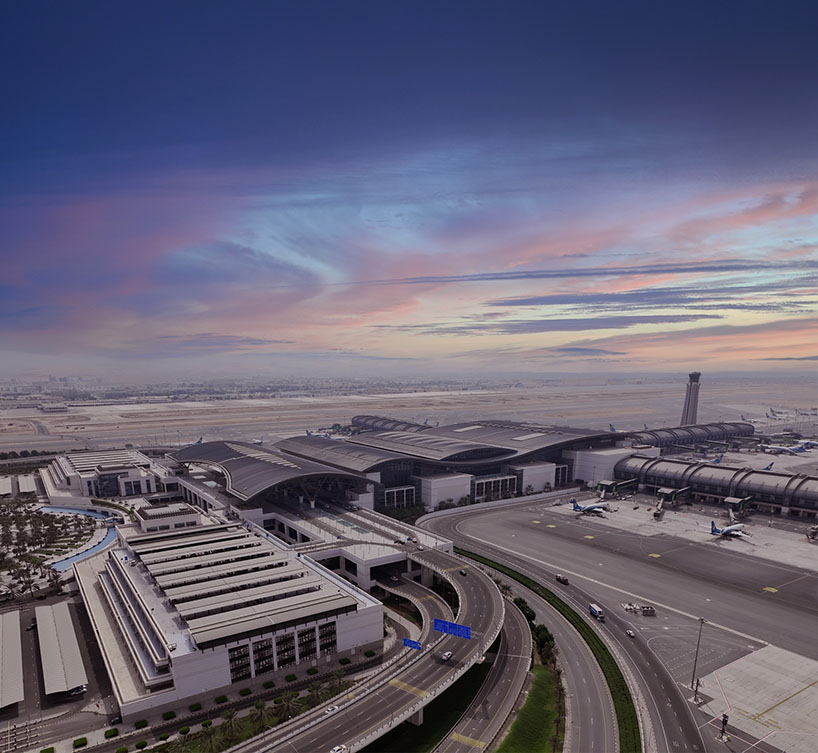Muscat International Airport – celebrated as the “Gateway to Beauty & Opportunity” in the Sultanate of Oman – has been ranked in first place in the Air Help Global Airports Ranking for 2023, which takes into account the airport’s standards of on-time performance, compensation claims processes, customer reviews, and dining and shopping offers.
Muscat International Airport topped the Air Help ranking list in the number one spot, while Guararapes-Gilberto Freire International Airport (Recife, Brazil) earned the second-place position. Cape Town Airport (South Africa) came in third place.
Brasilia Juscelino Kubitschek International Airport (Brazil) took fourth place; while Hamad International Airport (Qatar) was fifth, Osaka Itami International Airport (Japan) was sixth, Belém Val de Canes International Airport (Brazil) was seventh, Tancredo Neves International Airport (Brazil) was eighth, Tokyo Narita International Airport (Japan) was ninth, and Amami Airport (Japan) was tenth on the awards list.
This global award by Air Help is another one of many awards previously won by Muscat International Airport. To-date, the airport has won the “Best Quality Airport in Customer Service in the Middle East Award” for airports with the capacity between 15-25 million passengers (as evaluated by passengers within the International Airport Quality Program/ASQ approved by the Airports Council International/ACI).
Muscat International was also named the “Leading Airport in Customer Service in the Middle East – 2023” at the World Travel Awards. This reflects the keenness of the airport, its employees, and strategic partners from all sides to continue their efforts to maintain Muscat International’s status as a world-class airport destination, managed according to the highest international airport standards.
This overall excellence in performance is a vivid result of Muscat International’s cooperation with all the entities operating at the airport. Collectively, these entities are continuing to contribute to the achievement of these kinds of prestigious milestones and other top rankings.
It is noteworthy that Muscat International Airport, which was built according to the highest international standards, achieved rapid successes and substantial gains in the number of passengers and air traffic in the years that followed the transfer of operations to its new passenger terminal – compared to those achieved in the years that preceded its opening in 2018.
Quality services are also of great importance as they are an integral part of Oman Airports’ strategy, with the aim of providing the highest quality services to arrivals, departures, and transit passengers. The passenger terminal building represents a comfortable environment for everyone, and it ensures that all travellers can avail the very best in airport services when arriving after a long flight.
Muscat International Airport’s three wings and other facilities are decorated with the designs and colours that are inspired by the core of the Omani environment and its immortal and inspiring heritage. The airport’s unique interior architectural design was also created to harmonize with smooth travel movement. These factors have meant that the airport building has become an icon and a distinctive masterpiece in the Middle East. Furthermore, this design heritage has inspired Muscat International’s permanent hosting of a corner for Oman’s National Museum, as well as the inclusion of a number of permanent and temporary installations, such as Omani-themed markets, which are inspired by the Sultanate’s rich heritage and culture.
The passenger terminal building contains 40 air bridges to transport passengers to and from their aircraft through 29 waiting lounges. There are also 16 additional waiting lounges to transport passengers via buses, when required. The current aircraft parking capacity includes 59 spaces.
The building also includes 72 check-in counters for airline companies and 24 check-in counters for business class flyers. It also has two gates designated for large aircraft such as the “Airbus 380”, which are connected with passenger boarding bridges and 10 baggage claim conveyer belts (eight for international flights and two for domestic flights, with a capacity of 5,200 bags per hour). The total conveyer belt length is 11 kilometres, and provides special services for handling private aircraft.








